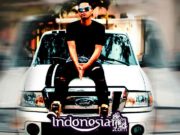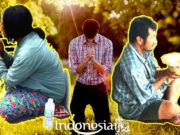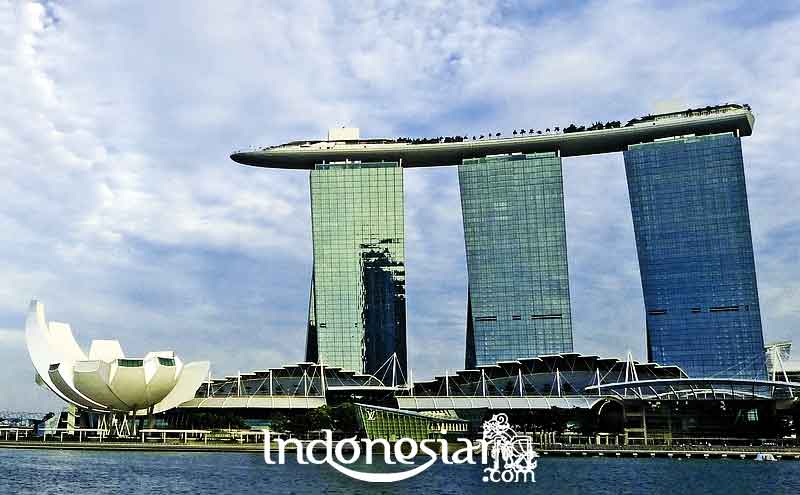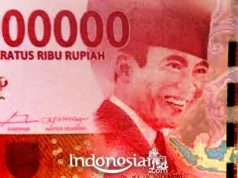Maluku is one of the indigenous peoples of Indonesia. On the continent of Europe, especially in the Netherlands, there are many Dutch citizens who are Maluku people. In the Netherlands there is the Maluku Museum. which not only keeps various artifacts and historical documentation of the Moluccans but also has its own bright existence.
Maluku Museum or often abbreviated as MuMa is a museum in Utrecht, The Netherlands. The museum, which was established under the name Moluks Historisch Museum (Maluku History Museum) in 1990, is based on a memorandum of cooperation between the Dutch government and the organizations of Maluku citizens in the Netherlands. The purpose of the establishment of this museum is to preserve and introduce Maluku culture to the public, especially in the Netherlands.
The Maluku Museum occupies a fairly large building, strategically located in Kruisstraat, Utrecht. This museum has various artifacts and documentation related to Maluku past and present. Observing the objects on display, it is as if we are taken back to Maluku in the past. In this museum, there are artifacts and documentation related to the social, political and cultural situation behind the establishment of the museum.
But what is unique is that this museum has a plasma monitor the size of a computer screen that provides a button to use to track family relationships based on clans in Maluku. So that if a visitor wants to know the pela relationship or which family name belongs to which village, Atlas Maluku on the website on the monitor will provide answers to all these questions.
In this Maluku museum, the relationship between pela can be searched, while the navigation of the section of clan names will still be improved. Visitors themselves can also contribute, for example, if they know family or clan relations that have not been explained on the site, they can provide input.
This website is incomplete, there are still names of family and pela relationships (a term known by the Ambonese people to refer to an alliance system agreed upon between two or more villages / countries) that have not been registered. In the future this site or clan will also be expanded with links to photos, films and various documents. So if anyone wants to add something to the link on the website, you can tell MuMa. Of course, you are also welcome to forward, add or correct information to the Museum management.
Next, we enter a room that turns left slightly from the direction of the main entrance. Here we get information about the history of Maluku through the pictures and artifacts on display. We also get a picture of how in the sixteenth and seventeenth centuries, the arrival of the Portuguese and the Dutch resulted in major changes in the Maluku islands. There is also information or history that Verenigde Oost-Indische Compagnie (VOC) controlled the spice trade and established a trade monopoly that lasted more than two centuries, including in Maluku.
Many things related to the history of Maluku have to do with the objects on display. More than four centuries, the Moluccans and the Dutch have a shared history. In that history, cooperation and resistance have become an important part. This can be seen on one wall of the museum, next to a picture of an “anonymous” soldier loyal to the Netherlands, a picture of Thomas Matulessy leading a revolt against the Dutch in 1817.
Maluku Diaspora in the Netherlands
In World War II, there were Moluccans who participated in the resistance against Japan, while there were Moluccans who opposed the return of Dutch rule after the war was over. In the decolonization of Indonesia, the Moluccans were on the side of the Netherlands and on the Indonesian side. The arrival of more than 12,500 Moluccans to the Netherlands in 1951 was one of the last parts of the decolonization process.
On March 21, 1951, the Kota Intan Ship carrying the first group of Moluccans arrived at the port of Rotterdam. For most Moluccans, at that time the trip to the Netherlands was the greatest journey they had experienced. At that time, everyone believed they would return to Maluku, but no one expected that they would stay for long in the Netherlands.
Upon arrival, the Moluccans were scattered throughout the Netherlands. They were placed in entertainment establishments, monasteries, places for the unemployed and defenses of Germany from war times like Westerbork and Vught. They live far away from Dutch society and are waiting to return home. Many Dutch people consider the Moluccans to be the first largest foreign party in terms of numbers entering their country.
To describe the early conditions of the Maluku people in the Netherlands, the Maluku Museum also provides duplicates of the rooms they lived in, complete with beds, cupboards and kitchen utensils that were used at that time. The clothes and coats that have been used are still neatly stored.
The arrival of Maluku boys and girls in the Netherlands in 1951, became adults in the 60s and 70s. Some of the second generation members chose the path of violence, calling attention to ideals of belonging to their own country and resenting their parents’ fate.
“The occupations in Wassenaar (1970), Amsterdam (1975), Bovensmilde (1977) and Assen (1978) and the hijacking of trains in Wijster (1975) and De Punt (1977) shook Dutch society as well as Maluku society itself. The 80s and 90s were a time of “introspection” for the Moluccans about their position in the Netherlands, including about their culture and traditions during the transitional period before the third and fourth generations began to appear, “explained Bung Wim.
The Maluku Museum has an information room. In this information room visitors can get information about the Moluccans in the Netherlands, about Maluku, as well as stories about Maluku during the Dutch East Indies period and Indonesian history. This room consists of a library and a reading room. There are various kinds of archives along with a fairly complete collection of photos or audiovisual material in the room.
Most of the collections contained here are gifts from individuals, so it can be said that the Maluku museum has unique materials. In this reading room which is open to the public, visitors can look around and or read various kinds of books, magazines, newspaper clippings or archives. Most of the collections in the reading room can be borrowed at a rate of 5 Euros per book as collateral.
The reading room is open from Tuesday to Friday from 13.00 to 16.30; If by appointment, it can also be agreed to open in the morning or on weekends (Saturday / Sunday). It is possible to borrow exhibition collections and order digital photos. If you want to know more about the information center, or want to make an appointment, you can contact the telephone number and email of the Maluku museum which are available on the museum website.
This Maluku Museum has a theater room. This room can be used for shows, meetings, debates and workshops. Because the concept is that the stage and the audience are close together, this theater space is perfect for acoustic performances. The theater room has a capacity of 70-80 seats and can also be rented.
Also interesting about this museum is that its existence was inseparable from the upheaval in the 1970s by some of the Maluku descent in the Netherlands. They demanded a promise from the Dutch government to be recognized as citizens or to help establish their own territory in Maluku.
The explosion of a train and the taking hostage of Indonesian consular staff in The Hague were some of the actions carried out. These acts of violence can be reduced after negotiations, one of which is that the Dutch are willing to establish a Maluku museum in Utrecht.
The operation of this Maluku museum is closed at 17.00 or 5 pm Dutch time. For efficiency reasons, since January 2018, the Maluku museum has moved from Utrecht to The Hague, in a smaller building and fewer employees. To rent a new place, MuseumMaluku joined 3 other organizations.
Source : tabaos






























